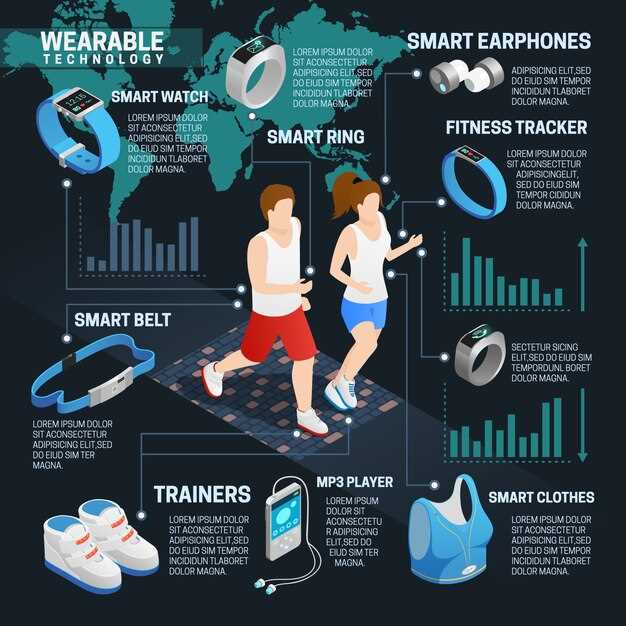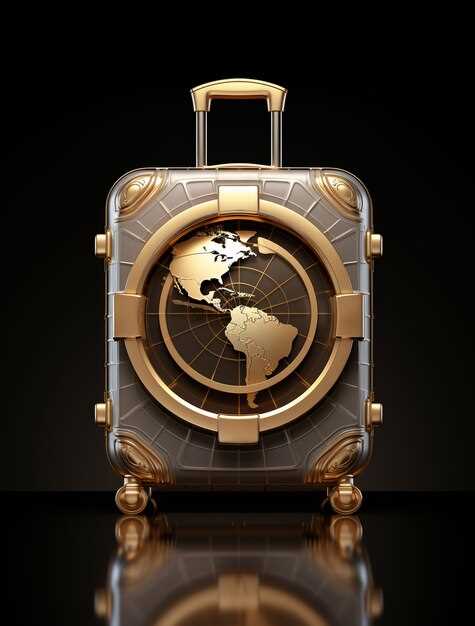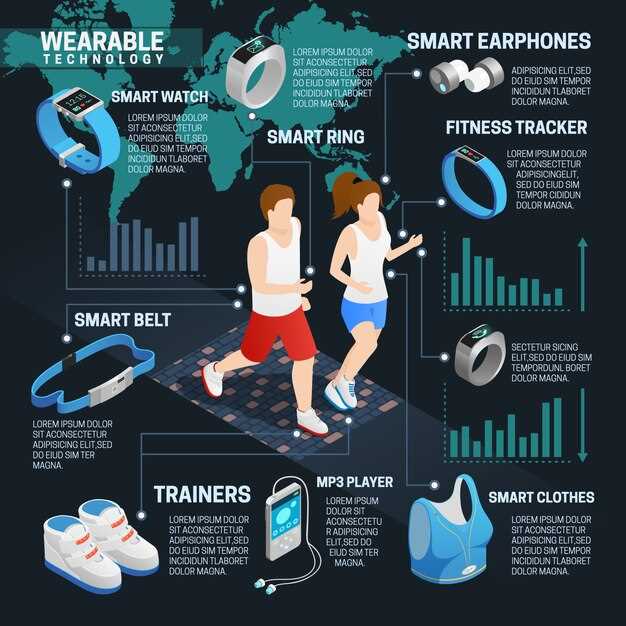Invest in a connected suitcase if you crave convenience and security while traveling. These technological marvels come equipped with a variety of features designed to make your journey seamless. From integrated GPS tracking to built-in USB charging ports, smart luggage has evolved beyond traditional travel gear.
Start with security innovations. Modern connected suitcases often feature TSA-approved locks, providing peace of mind for those concerned about airport checks. Advanced options include fingerprint recognition systems, ensuring only you or trusted individuals can access your belongings. Enhanced security does not end here–tracking technology embedded in the suitcase guarantees that you can locate your luggage at any given moment.
Power management is another game-changer in smart luggage design. Consider suitcases with removable power banks, allowing travelers to charge their devices without searching for an outlet. Most of these power systems comply with airline regulations, so there is no risk of your suitcase being left behind at check-in due to a non-removable battery.
Lastly, think about productivity and ease of use. Integrated digital scales prevent overpacking worries, while Bluetooth connectivity allows you to monitor your suitcase’s weight directly from your smartphone. Paired with user-friendly apps, these features offer invaluable travel insights such as location updates, battery status, and lock operation, all at your fingertips.
Understanding Core Technologies in IoT Luggage

Begin by leveraging GPS tracking to monitor the real-time location of your luggage. This technology ensures that you can always pinpoint where your suitcase is, reducing the risk of loss during travel. Opt for models that offer easy integration with smartphone apps, enabling seamless updates and alerts.
Next, focus on Bluetooth connectivity. A robust Bluetooth system allows for the efficient control of suitcase features via a mobile device. For instance, check whether the suitcase offers remote locking mechanisms, which use Bluetooth signals to secure your luggage without requiring physical contact.
Consider the importance of weight sensors, a handy feature for avoiding excess baggage fees. These sensors automatically calculate the weight of your luggage and provide instant feedback via a connected app, allowing you to adjust the contents as needed before check-in.
Power banks integrated within the suitcase design enhance travel convenience by allowing you to charge devices on-the-go. Ensure the power bank is removable and complies with airline regulations, as some carriers have restrictions on lithium-ion batteries.
Smart security features, such as biometric locks, add an extra layer of protection. Fingerprint recognition technology ensures only authorized users can access the suitcase’s contents, offering peace of mind during transit.
Finally, RFID blocking pockets protect your personal information from unauthorized scans. Luggage that incorporates RFID-blocking materials helps prevent identity theft by shielding passports and credit cards from electronic pickpocketing attempts.
Smart Lock Systems: How They Work and Enhance Security
Opt for smart lock systems that integrate biometric authentication to ensure maximum security. These systems use fingerprint recognition or facial recognition technology, allowing you hassle-free access to your suitcase. Forget about keys or combinations; simply press your finger or glance at the sensor for instant entry.
Another key feature to consider is remote locking and unlocking through Bluetooth connectivity. This allows you to control your suitcase lock from your smartphone, offering flexibility and peace of mind. Did you leave your bag unlocked at the hotel? No problem, just lock it through the mobile app.
Most smart locks come with tamper alerts that notify you of any unauthorized attempts to access your luggage. This real-time feedback is crucial when traveling, as it immediately alerts you to potential security breaches.
For added control, choose smart lock systems that support temporary access codes. Share a one-time code with trusted individuals, such as travel companions, to allow temporary access to your luggage without compromising your security.
Battery life is also an essential consideration for a reliable smart lock. Look for systems that offer extended battery life and feature a low-battery alert to ensure your lock remains operational throughout your travels.
Avoid potential compatibility issues by selecting smart locks that support multiple platforms and devices. Check if the system is compatible with both Android and iOS devices to ensure seamless integration with your existing gadgets.
Integrated GPS and Tracking: Never Lose Your Luggage Again
Choose a connected suitcase with a built-in GPS tracker to enhance peace of mind during your travels. This feature allows you to track your luggage in real time via a smartphone app, ensuring you always know its location. In case your luggage is misrouted, simply access the app to pinpoint its exact whereabouts and communicate with airline customer service efficiently.
Look for models offering global coverage to remain connected across international destinations without signal disruption. Some systems even offer geofencing capabilities, sending notifications if your luggage moves beyond a defined perimeter. This is especially useful in protecting against theft or if you accidentally leave bags behind.
Ensure the device has a robust battery, as longer trips might demand longer tracking duration. Many GPS-equipped suitcases feature rechargeable batteries, while others allow for external USB power banks for added convenience.
When selecting a tracking feature, consider whether the service requires a subscription. Some options bundle tracking services with no additional fees, while others might need a monthly or annual payment, affecting long-term costs. Choose a configuration best aligning with your travel frequency and habits.
Battery Life Management: Staying Powered on the Go
Prioritize a suitcase with a smart battery system that includes removable power banks. This offers the flexibility of charging your devices separately and ensuring compliance with airline regulations. Consider a suitcase with a battery capacity of at least 10,000mAh to keep your devices running for an entire day of travel.
Maximize efficiency by utilizing the suitcase’s built-in USB ports. This eliminates the need to search for a power outlet at busy stations or airports. Choose models with fast charging capabilities, as they reduce downtime, allowing you to achieve an 80% charge in just 30 minutes.
Regularly monitor battery usage through the suitcase’s companion app. This helps you adjust settings, such as LED indicators, to conserve power. Scheduling charging cycles can further extend battery lifespan.
Lastly, during non-travel periods, store the battery at half-charge to maintain its health. Avoid exposing it to extreme temperatures, which can degrade its performance. With these strategies, keep your devices charged and your journey uninterrupted.
Bluetooth Connectivity: Seamless Integration with Your Devices
Choose a connected suitcase with Bluetooth connectivity to streamline your travel experience by integrating your luggage with your smartphone or other devices. Prioritize models offering reliable Bluetooth 5.0 technology to ensure a stable connection, fast data transfer, and wider range. This enables quick pairing with minimal signal loss even in busy environments like airports.
Maximize convenience by using Bluetooth to track your luggage within a specific range, reducing stress during travel transfers. Many suitcases can notify you via a mobile app when they are a certain distance away, preventing misplacements. Look for features such as proximity alerts to enhance security and peace of mind.
Leverage Bluetooth features to control integrated smart locks directly from your phone. This allows you to lock and unlock your suitcase effortlessly, eliminating the need for physical keys or combination codes. Ensure your chosen model supports this functionality as it enhances security and simplifies handling.
Some smart suitcases even offer Bluetooth audio signals to help locate your suitcase among a crowd. By triggering an audible alarm through an app, you can quickly find your bag even in busy terminals. Opt for a suitcase offering customizable alert sounds for personalization and ease of use.
Stay connected with built-in Bluetooth charging capabilities, allowing for easy power management of your electronic devices. This ensures that your smartphone, tablet, or any other gadget remains charged during your journey, making it an essential feature for modern travelers.
Built-in Weight Sensors: Preventing Overpacking and Fees
To sidestep excess baggage fees, rely on suitcases with integrated weight sensors. These smart features precisely measure your luggage’s load, ensuring compliance with airline regulations.
- Real-Time Alerts: Most connected suitcases with weight sensors offer real-time weight updates through mobile apps. Set weight limits for specific airlines, and receive instant notifications if you exceed these thresholds.
- Easy Calibration: Calibrate the sensors easily through accompanying apps to match your usual travel requirements or specific airline restrictions. This guarantees accurate weight measurements no matter where your trip takes you.
- Power Efficiency: With low energy consumption, these sensors often last multiple trips on a single charge, ensuring that your suitcase remains ready without frequent recharging.
- Seamless Integration: Many manufacturers offer seamless integration with digital assistants and smartphones, letting you access weight data and alerts effortlessly while planning your itinerary.
Opt for luggage that includes these sensors to avoid the hassle and costs of unexpected airline fees. Accurate weight information at your fingertips ensures smoother travels and a stress-free journey from packing to destination.
Choosing the Right Smart Suitcase for Your Needs

Consider your specific travel habits and requirements when selecting a smart suitcase. Frequent flyers might benefit from features like built-in location tracking and USB charging ports. Now, let’s look at some essential features and specifications to help you make an informed decision:
| Feature | Description |
|---|---|
| Size and Weight | Assess airline baggage restrictions and personal lifting capacity. Lightweight options often use polycarbonate shells for durability without compromising weight. |
| Battery Life | Choose a suitcase with a removable battery for convenience and compliance with flight regulations. Opt for at least 10,000 mAh capacity for extended usage. |
| GPS Tracking | If loss prevention is a concern, select models offering integrated GPS tracking. This ensures you can monitor your luggage’s location via a smartphone app. |
| Bluetooth Connectivity | Ensure your luggage remains nearby with Bluetooth range alerts. This feature can help prevent accidental leave-behinds at crowded terminals. |
| Anti-theft Protection | RFID-blocking pockets can protect your personal data from digital theft. TSA-approved locks add another layer of physical security. |
| Price Range | Balance your budget with necessary features. Premium options provide advanced tech features, while mid-range choices still offer significant conveniences. |
Prioritize the technologies that align with your travel style, ensuring your smart suitcase truly becomes a companion that enhances your travel experience.
Evaluating Durability and Material Choices
Choose a suitcase with a polycarbonate shell for optimal impact resistance and lightweight performance. This material is renowned for absorbing shocks during rough handling and maintaining its structure under pressure. Alternatively, aluminum offers exceptional durability and protection, although it adds to the weight.
- Polycarbonate: Known for being lightweight and highly impact-resistant, making it a popular choice for frequent travelers.
- Aluminum: Provides superior strength and security, suitable for those seeking robust protection against damage.
- Ballistic Nylon: Offers excellent abrasion resistance and durability, ideal for soft-sided suitcases that handle rigorous conditions.
- Makrolon: A premium variant of polycarbonate known for its increased toughness and enhanced scratch resistance.
Inspect the suitcase’s corner protection and reinforcement. Reinforced corners and edges significantly reduce the risk of breakage and wear over time, enhancing the suitcase’s longevity. Additionally, ensure that the zippers are robust; YKK zippers are a reliable option due to their durability and smooth operation.
- Reinforced Corners: These provide extra strength at stress points, crucial for preserving the suitcase’s integrity.
- YKK Zippers: Renowned for their reliability, offering smooth action and reducing the risk of zipper failure.
Assess the quality of handles and wheels. Telescopic handles should be sturdy and easy to maneuver, while wheels should be made from durable materials like rubber and feature 360-degree spinners for effortless movement. Properly constructed handles and smooth-rolling wheels ease the stress on the suitcase and the traveler alike.
- Telescopic Handles: Look for multi-stage locks for adjustability and strong construction for stability.
- Durable Wheels: Opt for double spinner wheels for better balance and effortless navigation through crowded spaces.
By carefully considering these durable material options and features, ensure that your connected suitcase withstands the rigors of travel and provides a reliable experience trip after trip.
Understanding Airline Compliance for Connected Devices
Avoid travel disruptions by checking airline policies regarding connected suitcases. Select models with removable batteries, a crucial feature due to many airlines banning non-removable lithium-ion batteries in checked luggage to mitigate fire risks.
Check size and weight restrictions to ensure your connected suitcase falls within airline limits. These restrictions differ among carriers, particularly regarding carry-on and checked luggage, so reviewing each airline’s policy is essential prior to travel.
Confirm whether the airline permits electronic devices during flights. Most allow Bluetooth and Wi-Fi-enabled devices once airborne, but specifics vary. Enable airplane mode during takeoff and landing to align with onboard regulations.
Stay informed about destination-specific rules. Some countries impose stricter regulations on connected devices due to security concerns. Make sure your suitcase complies with both departure and arrival city guidelines.
Prepare ahead by checking the International Air Transport Association (IATA) guidelines on smart luggage. These standards can serve as a reliable point of reference across different airlines globally, easing the compliance process.
This proactive approach ensures that your travel experience remains as smooth as possible, avoiding last-minute hassles at the airport.
Comparing Price Points and Feature Sets
Choose a connected suitcase by aligning its features with your specific needs and budget. If frequent travels keep you in the fast lane, consider investing in high-end models priced between $400-$600. These often include a robust GPS tracker, a built-in digital scale, and an impressive power bank capacity of over 10,000 mAh. Such options ensure you never compromise on convenience or security.
Mid-range options, typically $200-$400, balance cost and functionality. You can expect features like USB charging ports, reliable wheels, and a durable build. They offer adequate storage and connectivity for the casual traveler looking for reliability without breaking the bank.
For those testing the waters, budget-friendly models under $200 provide essential features. While skipping GPS and scales, these still offer USB charging and sufficient space, ideal for less frequent travels where high-tech features are a bonus rather than a necessity.
Assess feature sets carefully. A state-of-the-art GPS may not benefit you if you mainly take direct, short flights. Prioritize based on your routine, opting for enhanced power capabilities if you often lack access to outlets. Remember, the best suitcase makes travel easier, suiting both your adventures and wallet.
Q&A:
How does GPS tracking work in a connected suitcase?
GPS tracking in connected suitcases involves integrating a GPS module within the suitcase. This module communicates with satellites to determine the suitcase’s precise location. The information is then transmitted to a mobile app through cellular data or Bluetooth, allowing users to track the suitcase’s location in real-time.
Are the batteries used in connected suitcases allowed on flights?
Yes, the batteries used in connected suitcases are designed with aviation regulations in mind. Most connected suitcases use lithium-ion batteries that can be easily removed, making them compliant with most airline policies. However, it is always advisable to check with your specific airline’s regulations before flying.
What security features are included in connected suitcases?
Connected suitcases often include several security features designed to protect the contents. These may include TSA-approved locks, proximity alerts that notify the owner if they move too far from the suitcase, and tamper-proof zippers. Some models also feature fingerprint locks and facial recognition technology for added security.
Can connected suitcases charge electronic devices?
Yes, many connected suitcases come equipped with built-in power banks or USB ports, allowing travelers to charge their electronic devices on the go. This feature ensures that you have access to power for your gadgets even when you’re between charging stations.
What are the benefits of using Bluetooth connectivity in a suitcase?
Bluetooth connectivity in a suitcase enhances the travel experience by allowing seamless communication between the luggage and a smartphone app. Users can lock or unlock the suitcase remotely, receive notifications if it strays too far, and even monitor the weight of the luggage through integrated scales, all via Bluetooth technology.
